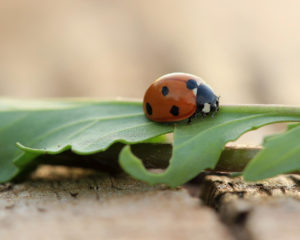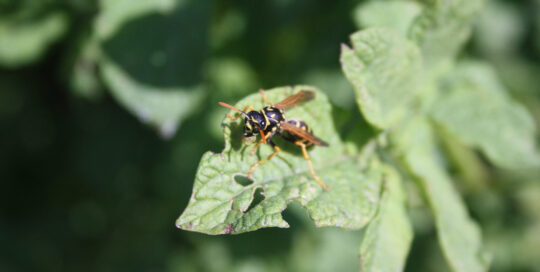What is Integrated Pest Management?
Views: 2962

I was delighted to see a greater emphasis on Integrated Pest Management in the MSU Extension Level 2 Master Gardener coursework offered here in Great Falls. It’s a positive and effective way to deal with many common garden issues, but a lot of people wonder what the heck it is, outside of something that sounds rather technical.
Looking at the Whole Garden
I guess the best way to describe it is IPM is a way to deal with pests on a proactive and whole-garden (or landscape) manner.
It’s not putting out the proverbial fires with a spray bottle. IPM is a way to approach the garden with the goal of making it healthy by considering a number of factors that affect it, which in turn, minimizes problems with pests. This doesn’t mean utilizing chemical controls is out of the question; it’s just used as a last resort and with minimal application.
The pest in Integrated Pest Management doesnt mean just the insects that may plague the garden. Diseases, large pests (such as rabbits, deer or birds) and weeds are also considered pests when it comes to IPM. Basically, it’s anything that has an adverse effect on what you’re growing.
IPM varies a little depending on your location, but there are a handful of consistent principles, including: identifying the problem; keeping track of the levels of pests and the damage (just because you might have a handful of problem insects in the garden or rabbits hopping around the perimeter of the garden doesnt mean you have to take drastic measures); decision on when you will step in and do something; preventing the problem in the first place; and using various means to remedy the situation when there is a problem.
Creating an Integrated Pest Management System
What I like about IPM is looking at the garden as an entire ecosystem. Its not just individual crops you need to groom to perfection. Its making the best use of the plants natural defenses against disease and insect pests.
Delving deep into Integrated Pest Management practices could fill a book and its why the Master Gardeners are spending so much time on it but there are a few simple ways to start. First off, diversify. Nature abhors a monoculture. Whether its in a perennial landscape or in the vegetable garden, the more you plant different types of crops, the fewer problems with pests youll have. Like anything, pests are looking for a solid food source. For example, if you have a dedicated rose garden youre inviting problems. You know if you have a particular insect or disease hit one plant, its most likely going to find its way to the others.
Another important part of Integrated Pest Management is properly preparing your soil and putting the plant in the right place. If your tomatoes are struggling in a partly shaded area theyre going to be far more susceptible to any insect pests, as well as pathogens. Learn what plants need and plan accordingly. Adding compost to practically any garden bed is a good thing.
Outside Pests
Keep in mind the beneficial bugs. You know I love the lacewings, ladybugs and other beneficial insects because they are part of my little hit team, but they dont live in a vacuum. Just think, if there were no pests for them to eat, why would they stick around? Just because you have a few aphids in the garden doesnt mean you have a problem with them. They provide a food source for ladybugs. A sterile garden is not a good thing.
Part of the Integrated Pest Management is determining that point where you have to step in to correct the problem. When a few aphids turn into too many, and are damaging the health or look of your plant, its time to do something about it. This might be something as simple as washing off a plant with an insecticidal soap. But the point of IPM is to do what you can before a problem arises so you can take the least drastic measure available that will do the job. Its a topic will talk about more in the future.
Meet Amy Grisak
Amy is a freelance author and photographer in Great Falls, MT who specializes in gardening, foods, and sustainable agriculture. She provides information on every kind…
Amy's Recent Posts

Looking into the Crystal Ball for a Pest Report








